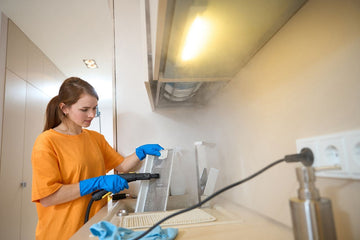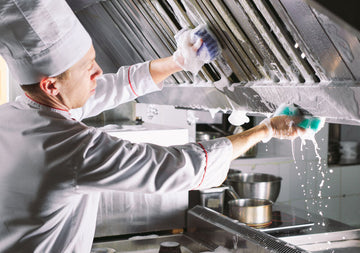Your kitchen is more than just a place to prepare dishes; it's the heart of your home. Over time, with the hustle and bustle of everyday life, our cabinets gather dust, grease, and grime. Knowing how to clean kitchen cabinets efficiently can revive the overall appearance of the room, making it fresh and inviting. In this article, we delve deep into the best ways to maintain and refurbish the look of your cabinets.
Importance of Keeping Kitchen Cabinets Clean
A clean kitchen is not only about shiny dishes and countertops. Cabinets play an integral role in the aesthetics and functionality of a kitchen. Ensuring they are free from dirt and stains keeps the entire room looking and feeling refreshed.
Brief Overview of Cabinet Cleaning Methods
From using a sponge and soapy water to delving into more intense cleaning solutions, we will cover various ways to ensure your cabinets remain spotless, both inside and out.
Understanding Your Cabinets
Cabinets come in various finishes and materials. Whether wood, laminate, or painted, each requires specific care to ensure longevity and maintain its pristine appearance.

Common Cabinet Materials and Their Characteristics
- Wood Cabinets: A timeless choice, wood kitchen cabinets are known for their warm and classic appearance. However, they are also prone to grease and grime build-up.
- Laminate Cabinets: Durable and often more resistant to stains, laminate still requires proper cleaning to prevent surface wear.
- Painted Cabinets: These cabinets offer a smooth finish but can chip or stain without the appropriate care.
Importance of Material-Specific Cleaning Techniques
Each cabinet material reacts differently to various cleaning supplies. Using the wrong product can damage the finish or even the core of the cabinet.
Everyday Maintenance for Kitchen Cabinets
Our daily routines, from preparing food to storing items, leave behind subtle traces of dirt and residue. Here's how to tackle them:
Daily Cleaning Practices to Keep Cabinets Looking New
A simple solution of dish soap and water can work wonders. Wet a cloth or sponge, scrub gently, then rinse and dry. This method can be especially effective for removing fingerprints from cabinet doors.
Dealing with Spills and Stains Immediately
Immediate action can prevent lasting damage. Always keep a damp cloth or sponge handy. For tougher spots, a mixture of baking soda and water applied as a paste can be gently scrubbed in.
Deep Cleaning Techniques
Deep cleaning breathes new life into your cabinets, targeting built-up grime, grease, and stains.

Natural Cleaning Solutions vs. Commercial Cleaning Products
Natural ingredients like vinegar and baking soda can be just as effective as commercial cleaners. Mix them in a spray bottle for a DIY cleaning solution. However, always test a small area first to ensure the mixture doesn't damage your cabinets.
Material-Specific Deep Cleaning Techniques
- For wood kitchen cabinets, a blend of equal parts water and vinegar can remove stains.
- For laminate, a solution of water and dish soap works well.
- Painted cabinets can benefit from a gentle cleaner to avoid stripping the paint.
Addressing Common Issues
From stubborn grime to sticky residues, cabinets face a plethora of challenges. Here's how to address them:
Dealing with Grease and Grime Build-up
A solution of equal parts water and vinegar, applied with a microfiber cloth, can help break down and remove this build-up.
Cleaning Sticky Residues
Dampen a cloth with a mixture of water and a few drops of dish soap to tackle sticky spots. A toothbrush can help reach crevices and intricate hardware details.
Removing Marks and Stains
Baking soda, when made into a paste with water, can help lift stains, especially on wood surfaces.
Cabinet Care Post-Cleaning
After all the scrubbing and rinsing, proper drying and care can keep your cabinets looking their best for longer.
Drying Cabinets Properly to Prevent Damage
Always dry your cabinets with a clean cloth after cleaning to prevent moisture damage, especially in areas near the sink.

The Role of Cabinet Polishing in Maintenance
Regular polishing, especially for wood cabinets, maintains shine and prevents surface wear. Ensure you choose a product suitable for your cabinet's material.
Preventative Measures
Maintenance is easier than recovery. Here are some steps to prevent dirt and damage:
Tips for Minimizing Dirt and Damage
- Always handle cabinets with clean hands.
- Place mats or liners inside drawers and shelves to catch crumbs and spills.
- Regularly dust the top of cabinets to prevent build-up.
When to Consider Professional Cleaning
If your cabinets have deep-set stains or the finish looks worn out, it might be time to call in the professionals for a thorough cleanup.
Conclusion
Knowing how to clean kitchen cabinets is essential in maintaining the heart of your home. With the tips provided, you can ensure your cabinets remain a standout feature, giving your kitchen a fresh and inviting look. Always prioritize regular maintenance, and don't hesitate to seek professional help when needed.
Frequently Asked Questions
Can I use the same cleaning solution for all types of cabinets?
No, the cleaning solution often depends on the cabinet material. Always test a small area first with a new solution.
How can I prevent damage to my cabinets?
You can prevent potential damage by handling cabinets with clean hands, addressing spills immediately, and regular cleaning.
What's the best way to keep the inside of my cabinets clean?
Regularly remove all items and wipe down the inside with a damp cloth or sponge to prevent dust and crumbs build-up.




